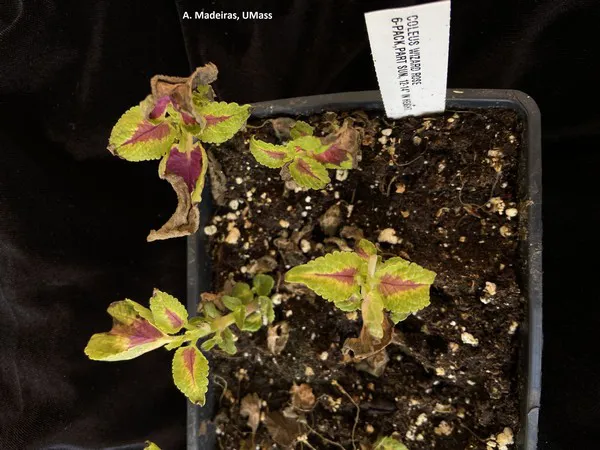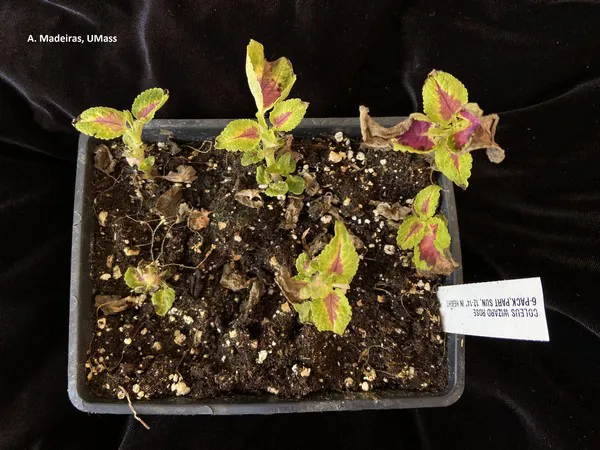Downy mildew was observed on coleus this week in a greenhouse in Massachusetts. Caused by the oomycete Peronospora choii, this disease can be found throughout most of the United States. Symptoms include yellowing and/or browning of leaves, distortion, and leaf drop. Under humid conditions, sporangia are produced on a fuzzy gray to purplish growth on leaf undersides. Seedlings may be stunted or killed.


The pathogen was originally believed to be Peronospora lamii, which causes downy mildew on mint. Genetic studies, however, have found that it is distinctly different from P. lamii and from P. belbahrii, which causes downy mildew of basil. Peronospora choii does not infect basil or mint, nor do the species found on these plants infect coleus. Agastache and perilla are also believed to be susceptible to P. choii.
Source: ag.umass.edu
